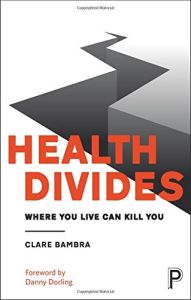Join getAbstract to access the summary!

Join getAbstract to access the summary!
Clare Bambra
Health Divides
Where You Live Can Kill You
Policy Press, 2016
What's inside?
Why some places are more healthful to live in – and how politics makes the difference.
Recommendation
Durham University professor Clare Bambra offers an in-depth analysis of how the politics and economics of the place you live in influence your health. She explains why health inequalities exist both among nations and within them. Bambra examines such inequalities past and present, and details their ubiquitous, longstanding nature. Reducing them – and making people’s lives safer and healthier – will require vast changes in political and economic priorities. In other words, “where you live can kill you,” but often it’s death by politics. getAbstract recommends Bambra’s report to forward-thinking leaders and public health advocates.
Summary
About the Author
Dr. Clare Bambra is professor of public health geography and director of the Center for Health and Inequalities Research at Durham University. Her research focuses on health and welfare systems and the role of public policies in reducing health inequalities.





















Comment on this summary